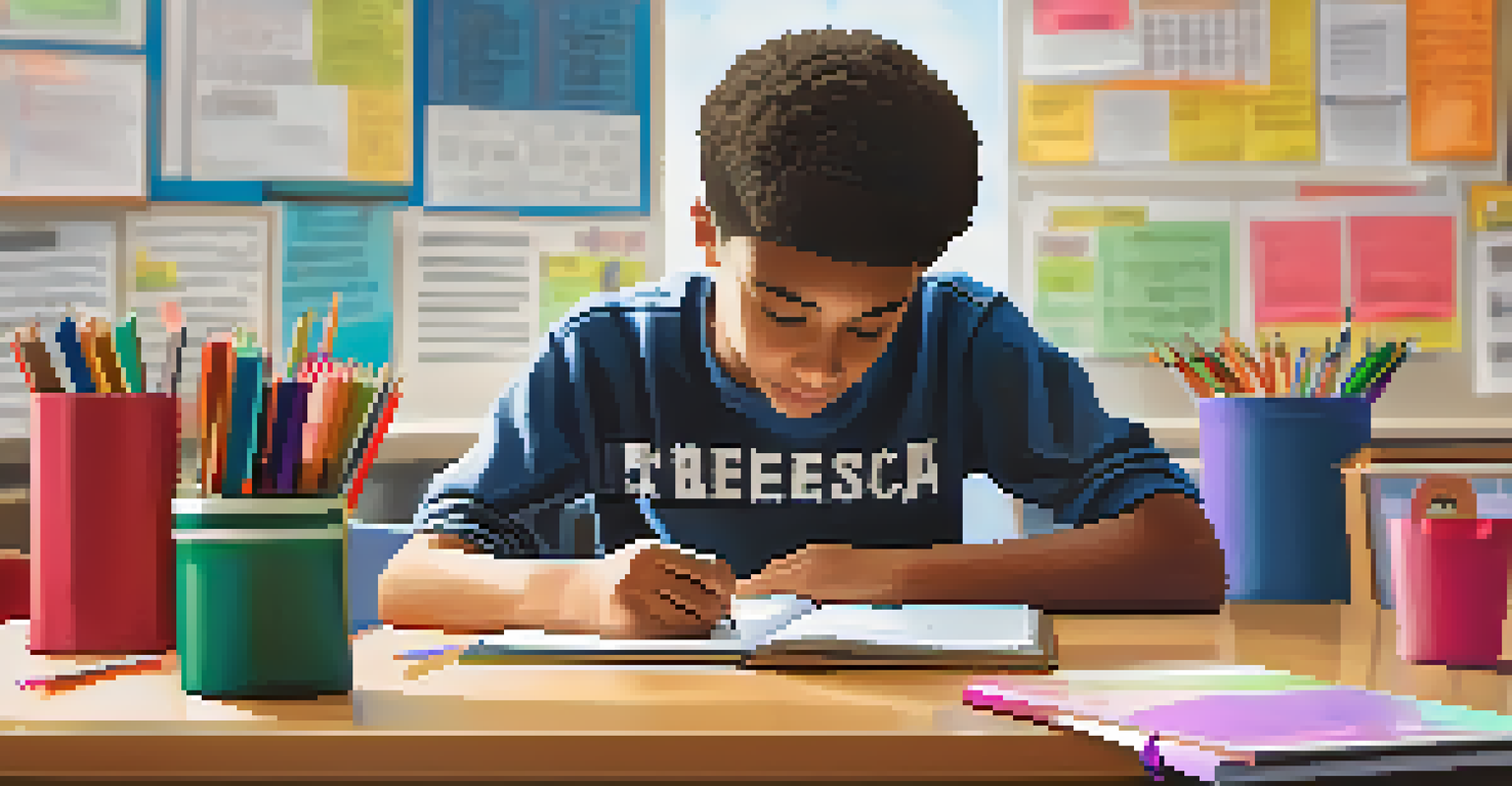Creating Engaging Assessments that Promote Student Agency

Understanding Student Agency in Assessments
Student agency refers to the ability of students to take control of their own learning. When students feel empowered, they are more likely to engage deeply with the material. This sense of ownership can transform assessments from simple tests into meaningful learning experiences.
Students who are empowered to take ownership of their learning are more engaged and motivated to succeed.
Incorporating student agency means giving learners a voice in how they demonstrate their understanding. For instance, allowing them to choose project topics or formats can lead to greater enthusiasm. This choice not only boosts motivation but also encourages critical thinking and creativity.
Ultimately, assessments that promote student agency can foster a sense of responsibility. When students see their choices reflected in their work, they are more likely to take pride in their achievements and learn from their mistakes.
The Role of Formative Assessments in Engagement
Formative assessments are ongoing evaluations that inform teaching and learning. These assessments can take many forms, from quizzes to peer reviews, and they provide immediate feedback. By integrating formative assessments into the learning process, educators can keep students engaged and motivated.

One effective approach is to use low-stakes quizzes that help students gauge their understanding. This method reduces anxiety and allows learners to focus on growth rather than grades. Additionally, incorporating self-assessment encourages students to reflect on their own learning journeys.
Empower Students Through Agency
When students have a say in their assessments, it fosters engagement and ownership of their learning.
Ultimately, formative assessments create a dynamic learning environment. When students receive regular feedback, they can adjust their strategies and take ownership of their progress.
Designing Assessments with Choice and Variety
Offering choices in assessments can significantly enhance student engagement. By allowing learners to select from a variety of tasks, such as presentations, written reports, or creative projects, you cater to diverse learning styles. This flexibility not only fosters creativity but also encourages students to invest more in their work.
The greatest gift you can give your students is to help them discover their own learning process.
For example, in a history class, students might choose to create a documentary, write a letter from a historical figure's perspective, or design a timeline. Each option provides an opportunity for exploration while allowing students to connect with the content in a way that resonates with them personally.
Ultimately, variety in assessments helps maintain interest and motivation. When students feel that they have a say in how they demonstrate their knowledge, they are more likely to engage fully with the learning process.
Integrating Real-World Applications in Assessments
Connecting assessments to real-world scenarios can enhance relevance and engagement. When students see how their learning applies outside the classroom, they are more likely to invest in the process. Real-world assessments can include projects that involve community issues or current events.
For instance, a science class could involve students in local environmental assessments, encouraging them to research and present solutions. This not only deepens their understanding but also instills a sense of responsibility and purpose.
Formative Assessments Enhance Learning
Ongoing evaluations provide immediate feedback, helping students stay motivated and informed about their progress.
By integrating real-world applications, educators can show students the value of their learning. This connection inspires them to take agency over their education, knowing that their efforts can make a real impact.
Encouraging Collaboration through Group Assessments
Group assessments can foster collaboration and build a sense of community among students. By working together, learners can share ideas, challenge each other’s thinking, and develop interpersonal skills. This collaborative environment can lead to richer discussions and a deeper understanding of the subject matter.
For example, a group project on a complex topic allows students to divide tasks according to their strengths. This not only makes the project more manageable but also encourages students to rely on each other, fostering a sense of teamwork.
Ultimately, collaborative assessments promote a shared responsibility for learning. When students support each other, they feel more invested in the outcome, leading to a richer educational experience.
Feedback: A Cornerstone of Student Agency
Feedback is crucial for enhancing student agency, as it helps learners understand their strengths and areas for improvement. Constructive feedback should be timely, specific, and actionable, allowing students to make informed decisions about their learning. This process empowers them to take charge of their educational journey.
For instance, providing feedback on a draft before a final submission can guide students in refining their work. It encourages them to reflect on their choices and make necessary adjustments, fostering a growth mindset.
Real-World Connections Boost Relevance
Linking assessments to real-life scenarios encourages students to see the value of their education and take responsibility for their learning.
When students receive meaningful feedback, they feel more equipped to take ownership of their learning. This empowerment can lead to increased motivation and a greater desire to excel.
Using Technology to Enhance Student Engagement
Technology can play a significant role in creating engaging assessments that promote student agency. Using digital tools allows for interactive and innovative assessment formats, such as online quizzes, discussion forums, and multimedia presentations. These tools can cater to various learning preferences and foster collaboration.
For example, platforms like Google Classroom or Padlet enable students to share their work and receive peer feedback in real time. This not only enhances engagement but also builds a sense of community among learners.

Ultimately, integrating technology into assessments can make learning more dynamic and accessible. By leveraging these tools, educators can create a more inclusive environment that promotes student agency.
Reflecting on Assessments to Foster Continuous Improvement
Reflection is an essential part of the learning process, helping students internalize their experiences. Encouraging learners to reflect on their assessment experiences can promote a deeper understanding of their growth and challenges. This practice allows students to take charge of their learning journey.
For instance, after completing an assessment, students might write a reflection on what they learned and how they can improve. This not only reinforces their learning but also encourages self-directed growth.
Ultimately, fostering a culture of reflection can empower students to become active participants in their education. By regularly reflecting on their experiences, they can develop the skills necessary for lifelong learning.